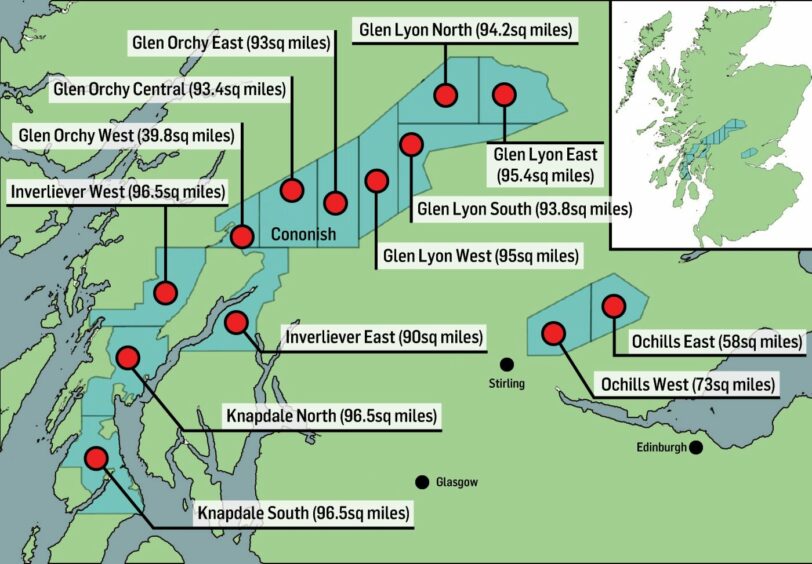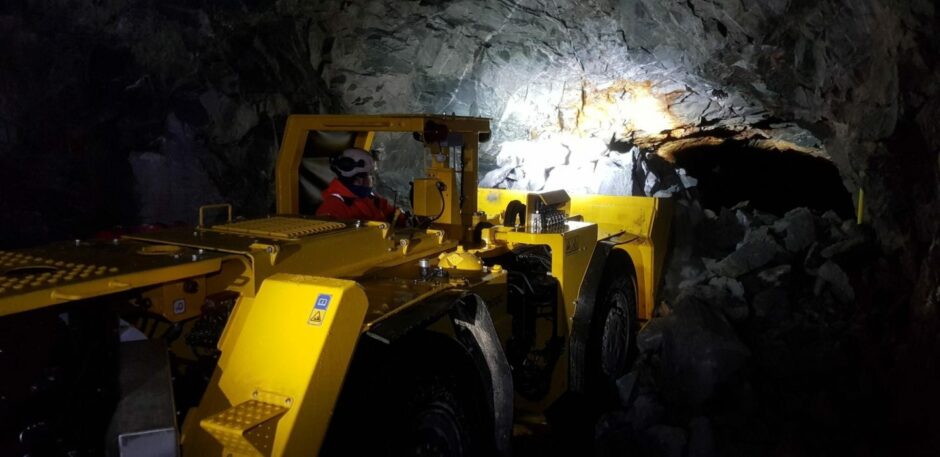Shares in Scotgold Resources, the company digging for gold on an Argyll hillside, rocketed more than 11% after it announced record production.
It said it achieved its highest gold concentrate output to date during December.
A total of 101 tonnes were produced, equating to around 700oz of contained gold – worth about £930,000 at current market prices.
This amount of gold concentrate is about 60% higher than the company’s previous best monthly production.
New debt funding
Scotgold, which also announced new debt funding worth £500,000, said it produced 1,508oz of gold and 7,200oz of silver from Cononish during the final quarter of 2021.
Gold and silver concentrate shipments totalled 231.5t, with a sales value of more than £2.6 million.
Cononish is on the edge of Loch Lomond and within the boundary of the Trossachs National Park.
Scotgold spent years trying to secure permission for its production plans.
The company now aims to become a “mid-tier multi asset gold producer” in Scotland.
It currently holds 13 lease option agreements covering an area of nearly 1,120 square miles of the central Highlands, mostly in rural Perthshire.
Three prospective areas close to Cononish have been identified and Scotgold intends to explore these during 2022 and 2023.
Chief executive Phil Day said, “I’m delighted to report on our record-breaking gold concentrate production in December.
“Our 2021 initiatives to increase production efficiencies and ramp-up production are working.
“It has taken hard-work, dedication, extensive planning and committed teamwork to transform our mining operations during the past nine months since I joined as CEO.
“Like many mines around the world, we have endured significant Covid disruptions, with many people infected or isolating repeatedly, along with significant challenges with our extensive supply chains.
“I’m honoured to be leading such an exceptional team here in Scotland and the UK who have worked tirelessly during these difficult times, with conviction to deliver.”
Mr Day, who took the helm at Scotgold last April, said the Alternative Investment Market-listed firm had almost completed phase one ramp-up at Cononish.
He added: “We continue to be cash generative as our production revenues exceed operational costs.”
The company forecasts the cash generation will continue as it increases production to 4,000 feed tonnes in the second half of the year and 4,500 by the end of 2022 – equating to 16,000-17,200 ounces run rate of gold per annum.
The annual run rate could be as much as 23,500oz by the end of March 2023, Mr Day said, adding: “This will allow us to develop the mine, increase our resources and continue exploration, and should drive significant shareholder value.”
Our 2021 initiatives to increase production efficiencies and ramp-up production are working.”
Phil Day, chief executive, Scotgold Resources.
Mr Day continued: “Our second step is the continued exploration of our additional licence areas which run across the prospective Grampian area of Scotland – the Caledonides Mobile Belt.
“We have identified three prospective areas, close to Cononish and it’s our intention to explore these in conjunction with our mine optimisation and development work at Cononish during 2022 and 2023.”
Shares in Scotgold, which started producing gold from Cononish, near Tyndrum, at the end of November 2020, raced ahead on the record-breaking news.
The stock was up more than 10p at 77.85p earlier today (January 14).
Supply side woe
Q4 production would have been higher, but for supply chain challenges.
Scotgold said November’s output was negatively impacted by “Covid-19 related supply issues” for explosives used to blast the mine face for ore extraction.
This meant 1,011oz of gold were produced in November and December, or 290oz below target.
But the issue was swiftly resolved and ore extraction “continues in line with the company’s mine plan”, Scotgold said.
The additional £500,000 of debt funding is intended as a “buffer through Q1 2022 short term mine plan grade variability”.
It is being provided to Scotgold through the renegotiation of a loan from Suffolk-based Bridge Barn, a company owned and controlled by non-executive director Nat le Roux.
Mr le Roux owns more than 40% of the gold producer, whose ambitions for an abandoned mine at Cononish first emerged around the time of its site lease application to the Crown Estate in early 2007.
Shares were up 11% to 75p at close of trading.




